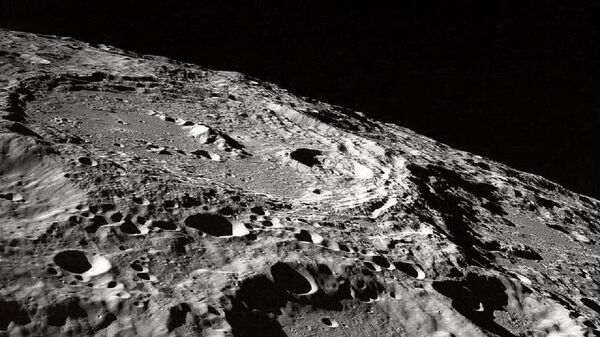The Earth and the Moon once had a joint magnetic field that acted as a shield against solar wind particles, says a new study conducted by an international team of scientists led by NASA. For a long time, scientists believed that the Moon didn’t have a long-lasting magnetic field due to the small size of its core. According to the findings of the study, published on 14 October in the journal Science Advances, by using new technology, NASA researchers analysed samples of the lunar surface that were collected during the Apollo missions and sealed for decades. The study showed that the heat during the Moon’s formation kept its iron flowing, which in turn generated a magnetic field, although it did not last long because of the core’s size.
"It’s like baking a cake: You take it out of the oven, and it’s still cooling off. The bigger the mass, the longer it takes to cool off", said Jim Green, NASA’s chief scientist and lead author of the new study.
In its early days, the Moon was a lot closer to the Earth, but over the years moved away due to gravity. The researchers created a computer model to see how the magnetic fields of the Earth and Moon interacted with each other. The simulation showed that the magnetospheres of both celestial bodies were connected in the polar regions of each object.
Scientists believe that this so-called shield played an important role in the evolution of Earth as it did not allow solar wind particles to strip away our planet’s atmosphere. The researchers calculated that the joint magnetosphere of the Earth and Moon persisted from 4.1 to 3.5 billion years ago. Over time, the Moon’s interior cooled off and the Earth’s satellite eventually lost its magnetosphere and atmosphere. Scientists say the Moon’s magnetic field weakened significantly 3.2 billion years ago before vanishing about 1.5 billion years ago.
According to NASA, which plans to establish a sustainable human presence on the Moon as part of its Artemis programme, the new study suggests that other moons may have helped their host planets preserve their atmospheres and potentially contributed to habitable conditions on these planets.
The new research will also help scientists to better understand the evolution of the Earth’s satellite.
"Understanding the history of the Moon's magnetic field helps us understand not only possible early atmospheres, but how the lunar interior evolved”, said David Draper, NASA’s deputy chief scientist and study co-author. "It tells us about what the Moon's core could have been like -- probably a combination of both liquid and solid metal at some point in its history -- and that is a very important piece of the puzzle for how the Moon works on the inside".



